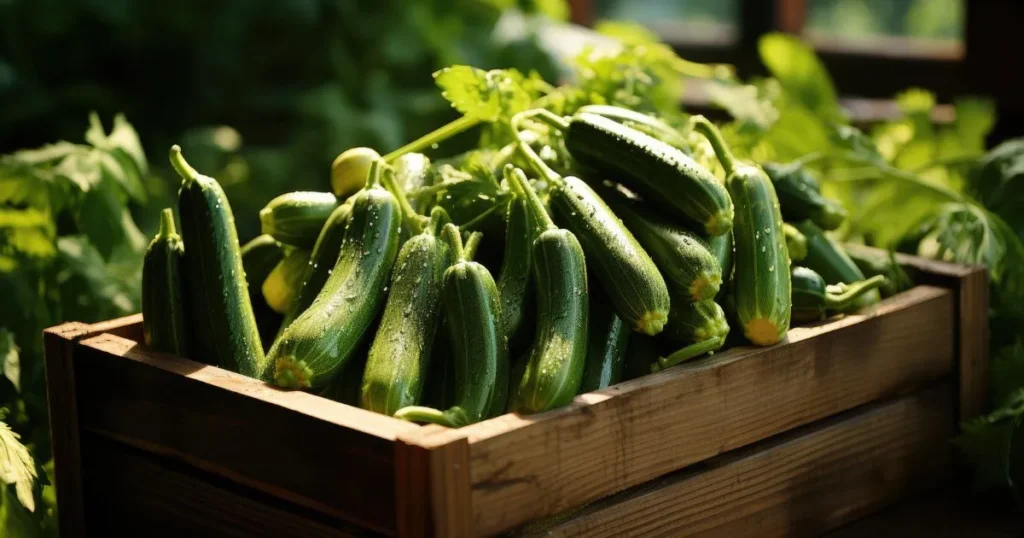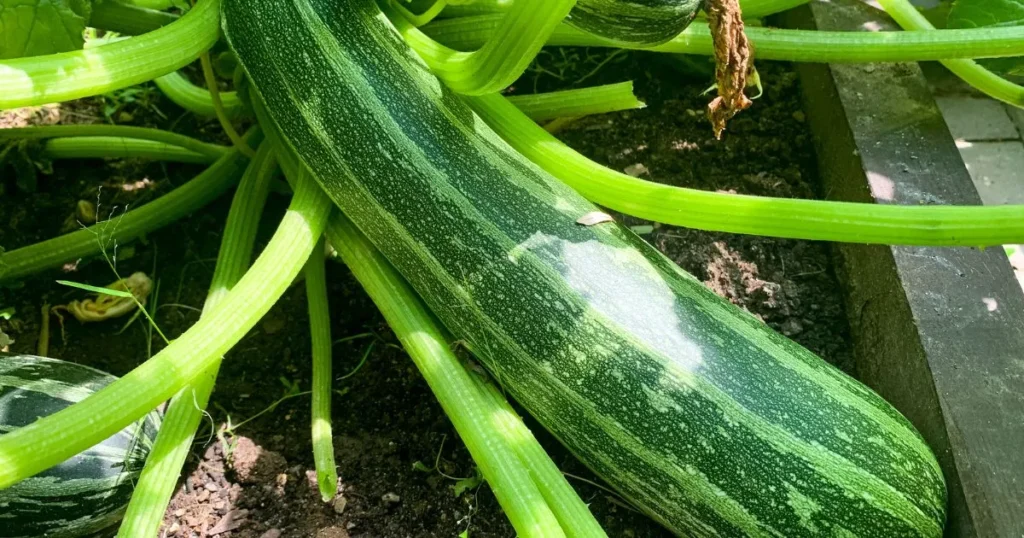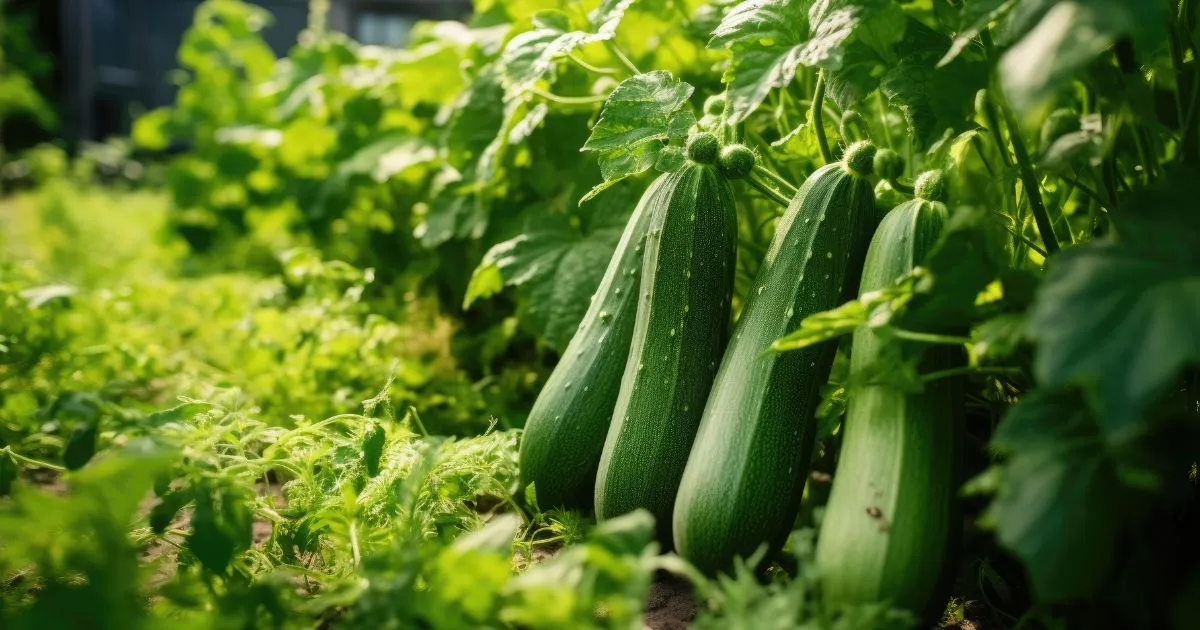Table of Contents
Growing zucchini in containers is a fantastic way to enjoy fresh, home-grown vegetables even if you don’t have a large garden. Whether you’re an apartment dweller or just limited on space, container gardening provides a versatile and manageable solution for cultivating this delicious and nutritious summer squash. In this article, we will explore the best practices, tips, and techniques for growing zucchini in containers to help you succeed in your gardening endeavor.
Why Grow Zucchini in Containers?
Growing zucchini in containers offers numerous benefits, especially for those who have limited space or poor soil conditions. Here’s why growing zucchini in containers can be a great option for you:
- Space Efficiency: Zucchini plants are known to spread widely when grown in the ground, but they can still thrive in a container. With container gardening, you control the space, making it perfect for small patios, balconies, or even windowsills.
- Soil Control: The quality of the soil in containers is entirely up to you. You can use high-quality potting mixes that drain well and offer the nutrients zucchini needs.
- Portability: Containers are mobile, meaning you can move your plants around to optimize sunlight exposure and protect them from harsh weather conditions.
Choosing the Right Container for Zucchini
When growing zucchini in containers, choosing the right pot or container is essential for healthy plant growth. Zucchini plants have large root systems, so they require sufficient space to spread out.
Ideal Size of Containers
The ideal container for growing zucchini should be large enough to accommodate the plant’s root system. Opt for containers that are at least 5 gallons in size. Ideally, a 10-gallon container will provide ample space for the roots to grow and spread.
Container Material
Containers come in a variety of materials, such as plastic, terracotta, and fabric. While all these materials can work for growing zucchini in containers, there are a few considerations:
- Plastic pots are lightweight, affordable, and retain moisture well.
- Terracotta pots are porous and allow for better air circulation but can dry out faster.
- Fabric pots are great for preventing the plant from becoming root-bound and allow for good drainage, but they may require more frequent watering.
Drainage
Proper drainage is critical when growing zucchini in containers. Zucchini plants do not tolerate standing water, which can lead to root rot. Make sure the container has at least one or two drainage holes at the bottom. If you’re using a container without drainage holes, you can add a layer of small stones or gravel at the bottom to help improve drainage.
Choosing the Right Soil for Zucchini Containers
For successful growing zucchini in containers, the soil you choose plays a significant role in the plant’s health. Zucchini plants prefer rich, well-draining soil that retains moisture while still providing adequate aeration.
Best Soil Mix for Zucchini
A high-quality potting mix designed for vegetables or container gardening is ideal for growing zucchini. These mixes usually contain a blend of peat moss, perlite, and compost, offering a good balance of moisture retention and drainage.
You can also create your own mix by combining equal parts of:
- Garden soil or compost: Rich in nutrients.
- Coco coir or peat moss: Helps retain moisture.
- Perlite or vermiculite: Improves aeration and drainage.

Fertilizing Your Zucchini Plants
Zucchini is a heavy feeder, so when growing zucchini in containers, it’s important to provide the plant with the nutrients it needs to grow healthy and produce abundant fruit. You can use a slow-release fertilizer or an organic fertilizer rich in nitrogen, potassium, and phosphorus.
- Fertilizing Frequency: You should fertilize your zucchini plants every 2 to 4 weeks during the growing season.
- Organic Fertilizer Options: Compost, well-aged manure, or organic vegetable food can provide a natural boost of nutrients.
How to Plant Zucchini in Containers
Now that you’ve chosen the right container and soil, it’s time to plant your zucchini. The process is relatively simple but requires a few important steps.
Choosing the Right Zucchini Variety
When growing zucchini in containers, it’s best to select compact or bush varieties. These types tend to stay more compact, making them easier to manage in a container. Some excellent zucchini varieties for container gardening include:
- Patio Star: A small, compact bush variety perfect for small spaces.
- Bush Baby: A miniature zucchini plant that thrives in containers.
- Black Beauty: A standard zucchini with a bushy growth habit, ideal for containers.
Planting Zucchini Seeds
You can either start with seeds or purchase young seedlings from a garden center. If you choose to grow zucchini from seeds, follow these steps:
- Fill the Container: Fill the container with your prepared soil mix, leaving about an inch or two from the top.
- Plant the Seeds: Plant 2-3 zucchini seeds about 1 inch deep. Space them about 6 inches apart to allow for future thinning.
- Water: Water gently to moisten the soil, but ensure that excess water drains out.
If you’re planting young seedlings, carefully transplant them into the container, making sure the root ball is level with the top of the soil.
Care and Maintenance for Zucchini in Containers
Once you’ve planted your zucchini, proper care is crucial for healthy growth. Zucchini plants require a combination of sunlight, water, and attention to pests and diseases.
Sunlight Requirements
Zucchini plants need full sun to thrive. Aim for at least 6 to 8 hours of sunlight per day. If you live in a particularly hot climate, providing some afternoon shade can help prevent your zucchini from overheating.
Watering Zucchini in Containers
Zucchini plants need consistent moisture, but they don’t like sitting in waterlogged soil. When growing zucchini in containers, it’s crucial to:
- Water regularly: Aim for deep watering rather than frequent, shallow watering.
- Avoid wetting the leaves: This helps prevent diseases like powdery mildew.
- Check the moisture: Ensure that the soil remains consistently moist but not soggy.
Pruning and Supporting Zucchini Plants
Zucchini plants tend to spread, even when grown in containers. To keep your plant manageable:
- Prune regularly: Remove any yellow or damaged leaves to encourage new growth.
- Support the plant: Use a tomato cage or stake to support the plant as it grows, especially if it starts sprawling out.
Pollination
Zucchini plants require pollination for fruit production. Most zucchini varieties are self-pollinating, but the flowers still need to be visited by insects like bees to transfer pollen. If you notice a lack of bees in your area, you can hand-pollinate by transferring pollen from male flowers (those with thin stems) to female flowers (those with a small zucchini at the base).
Pest Management
Common pests that may affect zucchini plants include:
- Aphids
- Squash bugs
- Cucumber beetles
To manage these pests:
- Inspect plants regularly: Look for signs of damage, such as yellowing leaves or visible bugs.
- Use natural pest control: Neem oil, insecticidal soap, or a mixture of water and dish soap can be effective against pests.

Harvesting Zucchini from Containers
Once your zucchini plant starts producing fruit, it’s time to start harvesting. Zucchini is typically ready to harvest when the fruit is 6 to 8 inches long and firm to the touch. Harvest zucchini regularly to encourage the plant to continue producing.
- Cut the fruit: Use a sharp knife or pruning shears to cut the zucchini off the vine, leaving a small stem.
- Be gentle: Zucchini plants can be fragile, so avoid damaging the main plant when harvesting.
Conclusion
Growing zucchini in containers is a rewarding and practical way to enjoy this versatile vegetable, even in small spaces. With the right container, soil, and care, you can produce a healthy and productive zucchini plant. Whether you’re growing in a balcony, patio, or windowsill, container gardening allows you to experience the joy of homegrown vegetables without the need for a large garden.
By selecting the right varieties, providing consistent water and sunlight, and maintaining your plants with regular pruning and pest management, you can enjoy a bountiful harvest of zucchini. So, grab your containers, plant your seeds, and get ready to harvest fresh, flavorful zucchini all season long.
FAQ – Growing Zucchini in Containers
Can zucchini be grown in small containers?
Zucchini needs a relatively large container due to its spreading nature. A 5-gallon container is the minimum size recommended, but a 10-gallon pot will give your plant more room to grow.
How often should I water my zucchini plant in containers?
Zucchini plants require consistent moisture. Water your zucchini deeply whenever the top of the soil feels dry. However, avoid overwatering, as it can lead to root rot.
Can I grow zucchini in a pot on my balcony?
Yes! Zucchini can thrive in containers on a balcony as long as they receive enough sunlight (at least 6-8 hours a day) and are watered properly.
Do I need to hand-pollinate my zucchini?
Zucchini plants are typically self-pollinating, meaning they have both male and female flowers on the same plant. However, they still rely on insects, particularly bees, to transfer pollen from the male flowers to the female flowers. If you don’t have many pollinators in your area, you can hand-pollinate your zucchini flowers by transferring pollen from the male flowers (which have thin stems) to the female flowers (which have a small zucchini at the base). To do this, gently pick a male flower, remove its petals, and use the stamen (the part covered with pollen) to brush against the pistil of the female flower.
Hand-pollination can help ensure that your zucchini plants set fruit, especially if you’re growing them in areas with fewer natural pollinators.

